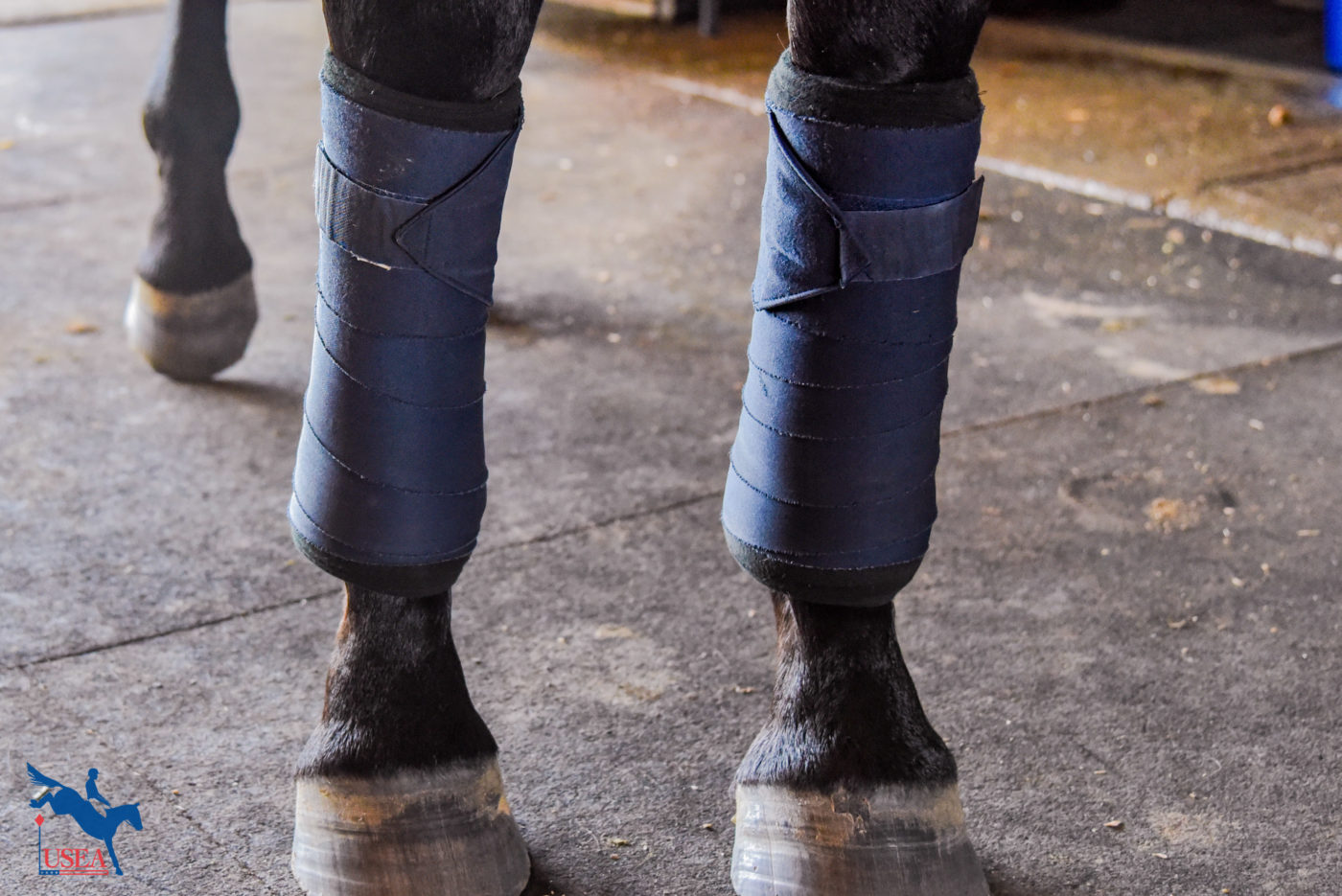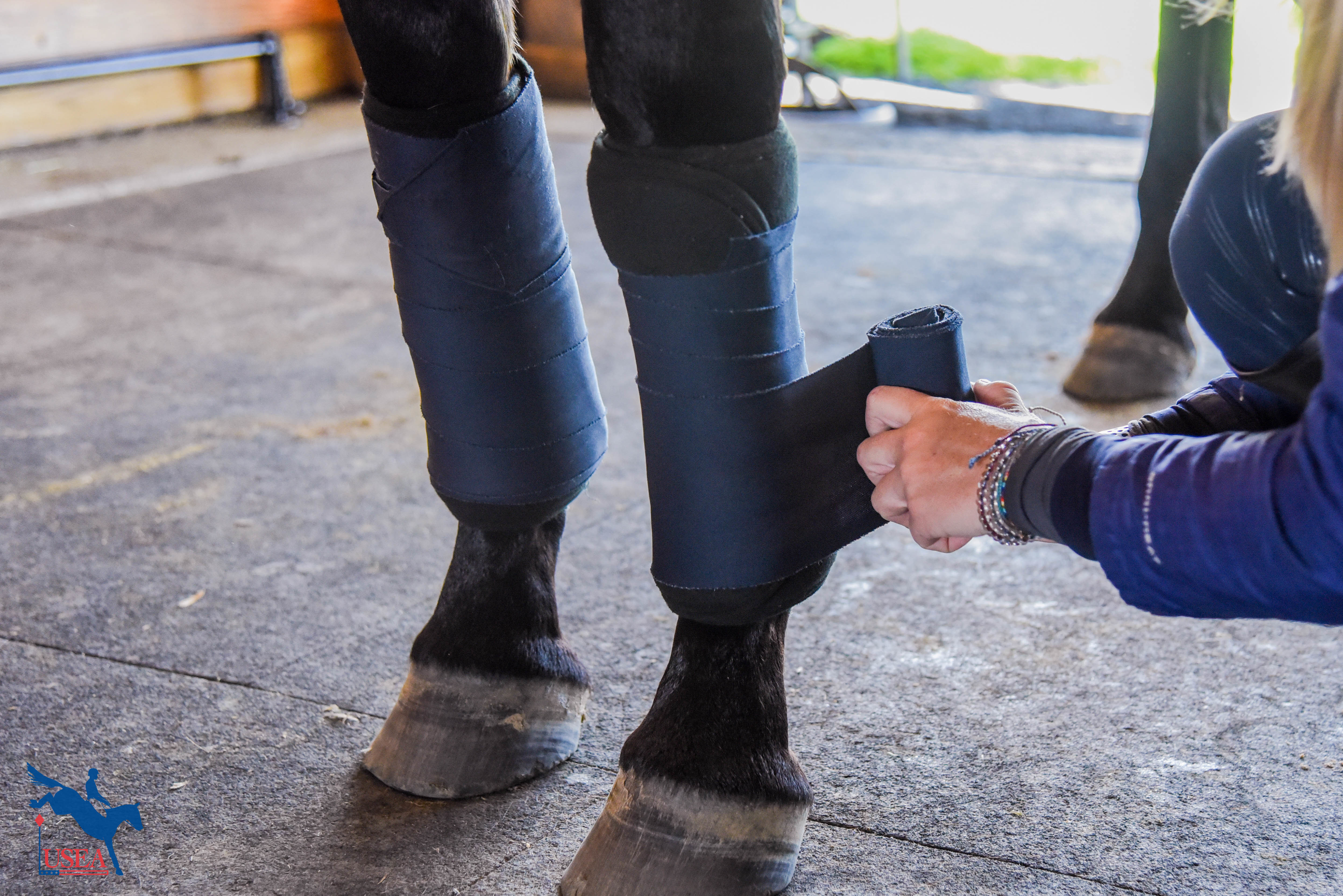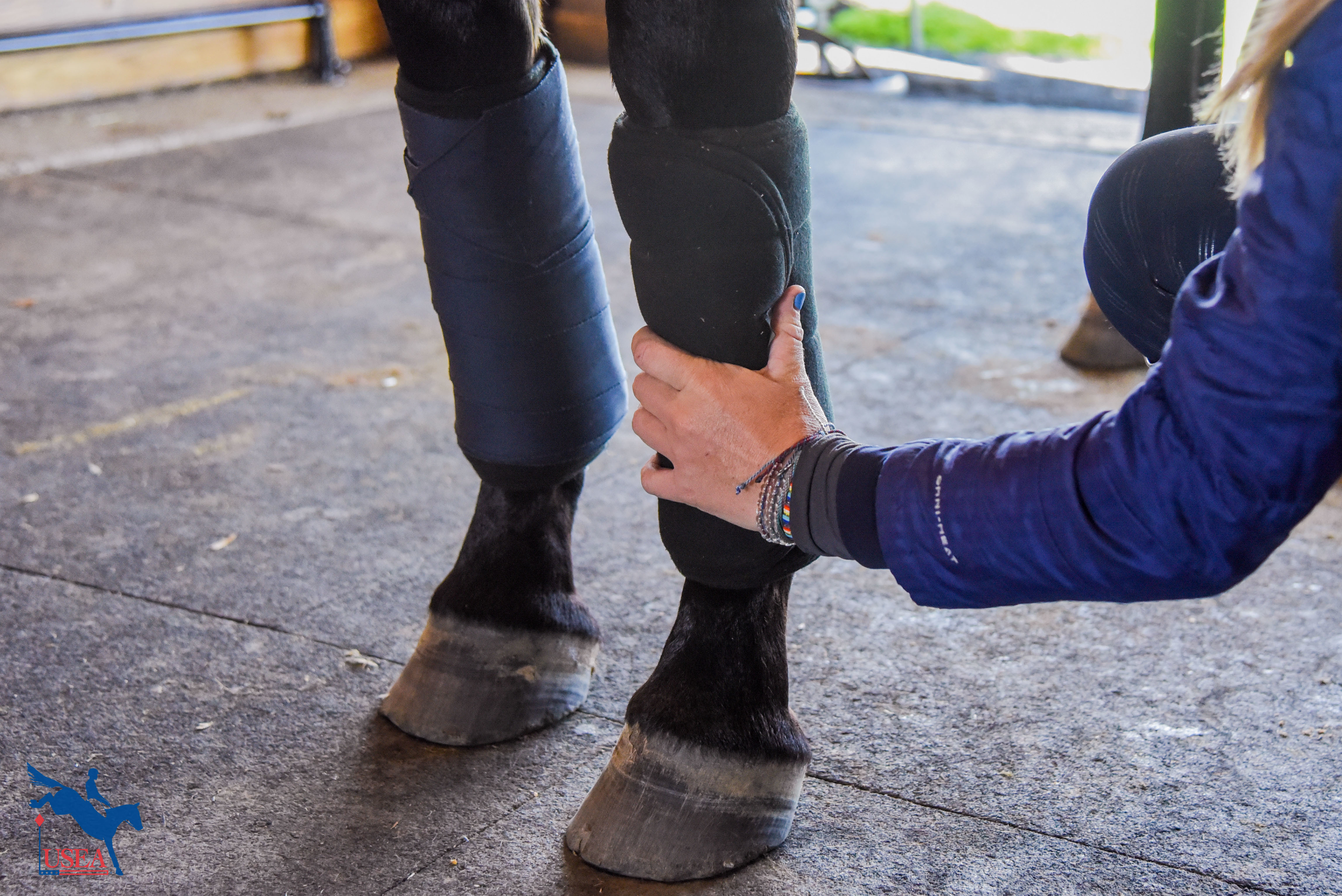Renew Your USEA Membership for the 2023 Season Today LEARN MORE

There are any number of reasons you may need to wrap your horse’s legs with standing wraps, but one thing is for certain – you want to be sure that you’re helping and not harming your horse’s legs with your wraps. To that end, Dr. Jeff Beshear has provided his list of best practices for bandaging your horse’s legs.
Dr. Beshear moved to Charlottesville, Virginia from Lexington, Kentucky in 2000, married three-day eventer Emily Mastervich (now Emily Beshear), and co-founded Old Dominion Equine Associates in 2002. His interests focus on sport horse lameness and diagnostic imaging.
1. Roll your wraps under tension (tight) so you can just lay them on the leg and keep equal tension.
2. Use a good thickness cotton to prevent differences in pressure (I like No Bows).
3. Always wrap from outside to inside across the back of the leg.

4. Avoid wrapping the knees or hocks.
5. Use an adequate length of cotton to extend from just below the knee or hock to just below the fetlock.
6. Lay wrap on evenly with no ridges.
7. If you're not comfortable wrapping or if your barn help isn't, try Quick Wraps (Velcro)

8. Avoid wrapping wet legs.
9. Never turn out in standing wraps that don't tear. If needed, use sheet cotton and Vetrap for turnout wraps.
10. Always use a clean cotton.
Check out this video on how to properly bandage a leg!